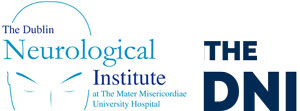
Grainne McKeown
Chartered Physiotherapist in Neurological Rehabilitation
Dublin Neurological Institute
Introduction
With over 12,000 people with Parkinson’s Disease (pwp) in Ireland, providing optimal care for this complex neurodegenerative disorder is a key priority for neurological physiotherapists.
In the last 15 years there has been an emergence of evidence supporting the role of physiotherapy in Parkinson’s disease (PD) with more than 100 international publications. In order to ensure clinical implementation of this research, colleagues from 19 European countries collaborated to develop the First European Physiotherapy Guidelines for Parkinson’s Disease – 2015.
This guideline recommends early access to physiotherapy, outlines best practice for physiotherapists working with pwp and stresses the importance of physical exercise from initial diagnosis through all stages of the condition.
Role of Physiotherapy
PD is a complex movement disorder with a variety of motor symptoms affecting physical capacity, transfers, dexterity, balance and walking. These are core areas affected by movement impairment which are amenable to physiotherapy interventions. Our scope of practise is therefore broad, changing through the course of the condition depending on disease progression and patient capability but importantly it is patient specific, focused on optimising quality of movement and preserving independence.
Assessment
Seeing a Neurophysiotherapist specialising in Parkinson’s on initial diagnosis is crucial. It provides a basis for tailored treatments specific to ones needs. Early intervention also gives a person the chance to discuss any concerns they may have and movement related issues can be addressed. The importance of physical activity and self-management strategies are highlighted. To help manage movement related problems pwp are encouraged to complete a Pre-assessment Information Form (PIF) prior to seeing a Physiotherapist. This is an excellent tool. It helps patients consider their key problems. It provides the physiotherapist with greater insight into patients concerns, level of function and physical capacity. PIF form can be found on www.parkinsonnet.info/guidelines
Exercise
The evidence supports exercise as a primary treatment for PD, secondary only to medication, with emphasis that it commences on initial diagnosis. The exercise components that need to be evaluated are:
• Balance
• Flexibility
• Gait analysis
• Complex Movement sequences
• Muscle Strength
• Endurance
However we know PWP exercise one third less than their healthy peers and have a tendency towards a more inactive lifestyle. Furthermore preserving physical capacity is vital to prevent secondary deconditioning, falls, musculoskeletal pain and further functional limitation.
Exercise therefore should be integrated into patient education programs and become a lifetime habit based on a person’s needs, lifestyle and capability. In my clinical experience those who exercise do better in relation to cardiovascular fitness, function and mood. Aerobic training and progressive resistance training have been particularly identified as key forms of exercise beneficial for pwp.
Unfortunately research has found that under dosing tends to be the norm. To ensure an ongoing training effect exercise needs to be structured, modified on a regular basis with incremental changes (which may include alterations in loading, repetitions and speed), and close monitoring of the patients response by a skilled Physiotherapist.
Movement Strategy Training
When a person has difficulty performing complex automatic tasks e.g. walking, turning in bed, getting out of a car the rehabilitation focus shifts to performing learned strategies (i.e. breaking down complex movements and using specific techniques) to compensate for movement control deficits.
Movement Strategy Training is effective to initiate and guide movement. It usually requires attention and use of external cues ( e.g. visual, auditory and tactile cues). The choice of movement strategy is specific to each functional deficit (e.g. the movement strategy employed for turning will be different to the strategy to initiate gait). Studies have shown that walking stride can be maintained following a period of training and when cues are removed. This would imply that the motor ability to generate a step is not lost but the difficulty lies with activation and coordination of the motor control system. These strategies are valuable tools and provide opportunities for rehabilitation.
DNI Physiotherapy
At the Dublin Neurological Institute pwp are referred to the physiotherapy clinic on initial diagnosis. Treatment, advice and monitoring are provided on an individual basis. Research studies at DNI have looked at dance as a therapy for PD and management of the common, but debilitating symptom – freezing. We have also commenced exercise classes specifically for pwp run by two experienced neurophysiotherapists. This is a very dynamic class aimed at improving physical capacity whilst importantly providing peer support. It is an area we hope to develop further.

